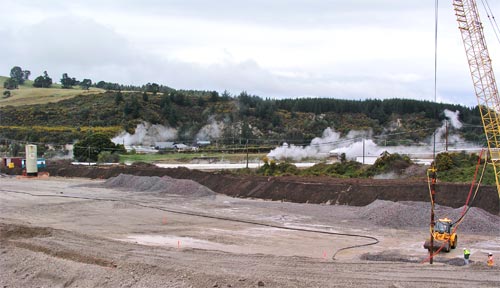
About half of New Zealand’s energy is derived from oil, much of which is imported. But there are some distinctive sources of electric power. This includes a major contribution of hydroelectric power derived especially from South Island rivers, some limited use of solar and wind power, and a geothermal power station drawing on the underground reserves in the Taupō region. The Wairākei geothermal station was commissioned in 1958. It draws steam from wells about 600 metres below the surface and by the time the steam reaches the power station the temperature is about 148°C.
Using this item
Te Ara - The Encyclopedia of New Zealand
Photograph by Shirley Williams
This item has been provided for private study purposes (such as school projects, family and local history research) and any published reproduction (print or electronic) may infringe copyright law. It is the responsibility of the user of any material to obtain clearance from the copyright holder.






Add new comment